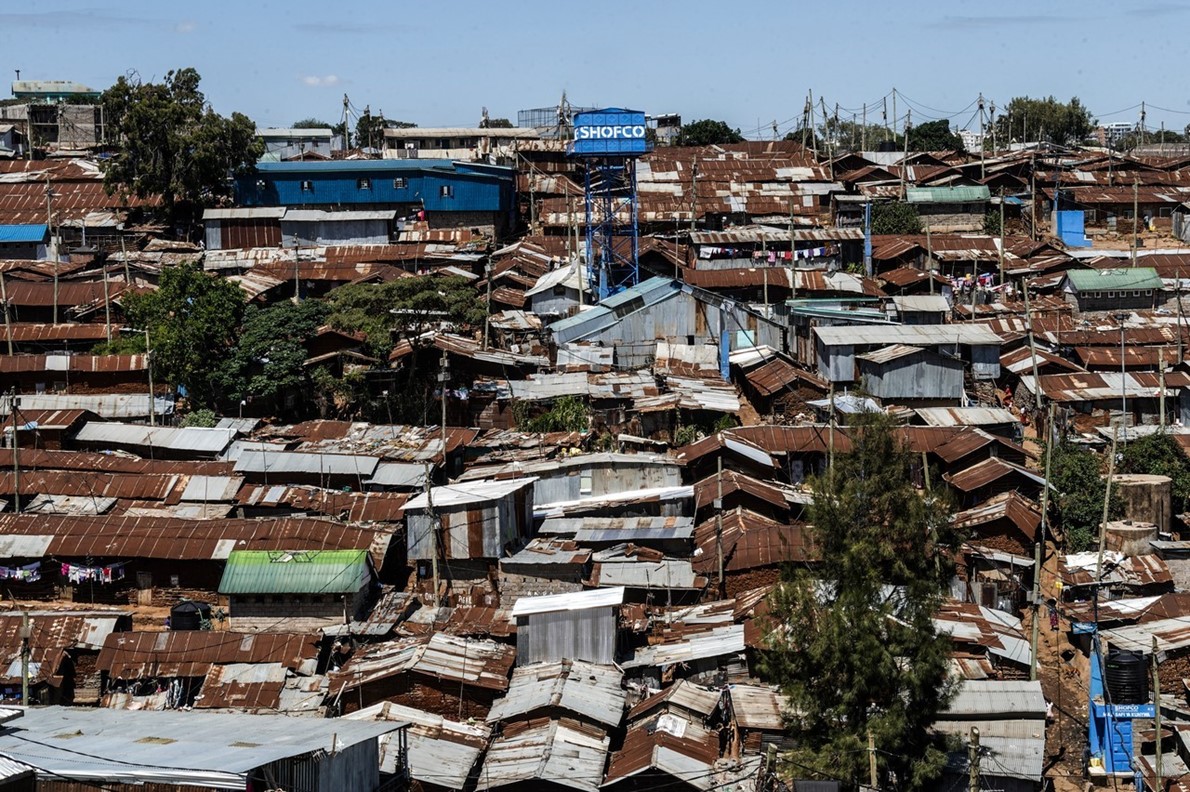NAIROBI, Kenya — Here in the Kibera
slum, life sometimes seems a free-for-all. Residents steal electricity by
tapping into overhead lines, children walk barefoot through alleys trickling
with sewage, and people occasionally must dodge “flying toilets” — plastic bags
that residents use as toilets and then dispose of by hurling them in one
direction or another.
اضافة اعلان
Yet this is an uplifting slum. Against all
odds, Kibera is also a place of hope, and it offers a lesson in bottom-up
development that the world should learn from.
The tale begins with a boy whose single mom
— 15 years old when she gave birth — named him Kennedy, because she wanted him
to be like an American president she had heard of. Little Kennedy Odede did not
attend formal school, and at the age of 10 he ran away from a violent
stepfather and ended up sleeping on the streets.
Kennedy taught himself to read and was
inspired by a biography of Nelson Mandela that a researcher shared with him.
Kennedy, ebullient and charismatic, then formed a Kibera self-help association
called Shining Hope for Communities, better known as SHOFCO.
An American student from Wesleyan
University, Jessica Posner, volunteered at SHOFCO and then persuaded Wesleyan
to accept Kennedy as a full scholarship student, even though he had never even
gone through a real elementary school. Jessica and Kennedy fell in love and
married when he graduated.
International aid keeps children alive, which is no small feat. But it has had less success in transforming troubled places.
One of SHOFCO’s early projects was Kibera
School for Girls, which recruited some of the most impoverished girls in the
slum. Their parents were sometimes illiterate, and one-fifth of those little
girls had been sexually assaulted. Yet the girls knew that they were special,
and with intensive tutoring they turned into star students, outperforming
children at expensive
Kenyan private schools.
I am an old friend of Kennedy and have been
following his work since my first visit a dozen years ago. One girl I met then,
when she was a second grader, is now studying at Columbia University. Her
former classmates are studying at four other US universities as well as at
Kenyan universities.
How can the world truly transform?Let us just acknowledge that development is
hard, particularly in urban slums that are growing fast around the world.
Billions of dollars are poured into the poorest countries, and in Haiti and
South Sudan one sees fleets of expensive white SUVs driven by aid
organizations; what is missing is long-term economic development. International
aid keeps children alive, which is no small feat. But it has had less success
in transforming troubled places.
That is where SHOFCO is intriguing as an
alternative model. Its grassroots empowerment approach has similarities with
BRAC, a Bangladesh-based development organization that I consider one of the
most effective aid groups in the world, and with Fonkoze, a similar homegrown
non-profit in Haiti.
 The
Shofco community center in Kibera slum in Nairobi, Kenya, on January 6, 2023.
The
Shofco community center in Kibera slum in Nairobi, Kenya, on January 6, 2023.
“Development has been part of imperialism —
you know better than anybody else because you’re from America or Europe,”
Kennedy told me. He thinks international aid sometimes is ineffective partly
because it feels imposed by the outside.
SHOFCO has spread through
low-income communities across Kenya and now boasts 2.4 million members, making it one of
the largest grassroots organizations in Africa. It provides clean water, fights
sexual assault, runs a credit union, coaches people on starting small
businesses, runs libraries and internet hot spots, mobilizes voters to press
politicians to bring services to slums, runs public health campaigns, and does
1,000 other things.
It succeeds, I think, because it
exemplifies a partnership: local leadership paired with a reliance on the best
international practices. SHOFCO, for example, adopted deworming and cervical
cancer prevention programs that reflect the best international knowledge, and
these were accepted by local people partly because they trusted Kennedy.
The program taught her that slum dwellers are as good as anybody else.
I had wondered how scalable SHOFCO was: Did
it depend on Kennedy’s charisma, making it hard to replicate in other slums?
No, the model has actually scaled smoothly across the country — and other
Kenyan slums turned out to have their own untapped Kennedys.
‘It’s on us to change it’I often write about poverty, and while the
subject can be depressing at times, I also regularly find reason to be
inspired.
One woman I met on this visit to Kibera is
Lauren Odhiambo, 23, a SHOFCO member whose dad died when she was young. She
shares a two-room shanty with six family members and occasional rats. The home
has no kitchen or running water, and evening requires some planning: The
neighborhood toilet is locked from 10pm to 6am.
Her mom earns $70 a month washing other
people’s clothes. But Lauren joined SHOFCO and took a computer skills class
that led to a job that pays $250 a month. Lauren has used that income to work
her way through the University of Nairobi, and this year she will become the
first person in her family with a college degree. After graduation, she expects
to find a job paying $400 a month.
This would not have happened
without SHOFCO, she said, and I asked her why, expecting her to talk about the computer
skills she learned. Instead, she made a broader point: The program taught her
that slum dwellers are as good as anybody else.
“I gained not just skills,” she said. “I
gained confidence.” As for the ongoing challenges she sees around her in
Kibera, she added, “It’s on us to change it.”
Kibera still needs sewers, schools, and
decent roads, but Lauren’s success is a reminder of what a grassroots
organization can accomplish against all odds in even the grittiest slum. That
fills me with hope. Shining hope.
Read more Odd and Bizarre
Jordan News



